Tibet Winter Tours Give More Insight Into the Tibetan Culture | Explore Tibet
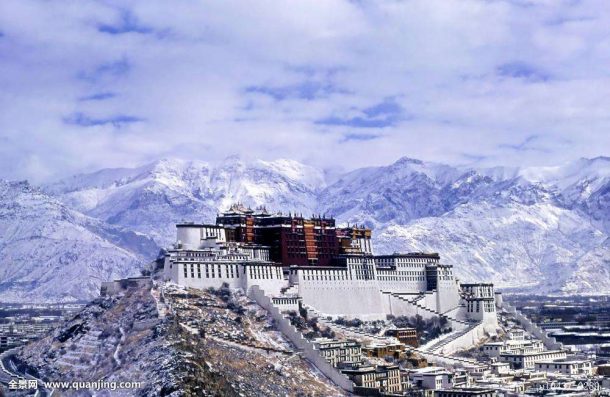
Potala palace during the Winter months
Most tourists to Tibet visit in the high season, from May to October, when the temperatures are warmer and the landscape is green and healthy, with lush prairies and verdant forests. However, winter is one of the best times to take a trip to Tibet, and it is not as cold as you might think.
Tibet is set on a high-altitude plateau, amidst tall mountain ranges, which catch the rainfall before it ever reaches the plateau. This means that most of Tibet is made up of desert steppe, permafrost, or tundra, except for the southearet areas. Most of Tibet experiences frost for around six months from November to April, and the highest lakes have ice throughout winter, although the weather does vary a lot from region to region.
Winter is the best time to visit Tibet
With a majority of the tourists visiting Tibet in the high season, it can sometimes feel swamped with people, with tourists lining up at the monasteries and temples in and around Lhasa. Winter, however, is the ideal time to come to Tibet, and experience the region in all its glory, without the crowds of tourists. And in Lhasa, and other places where tours can be run in the winter months is not as cold as one might imagine.
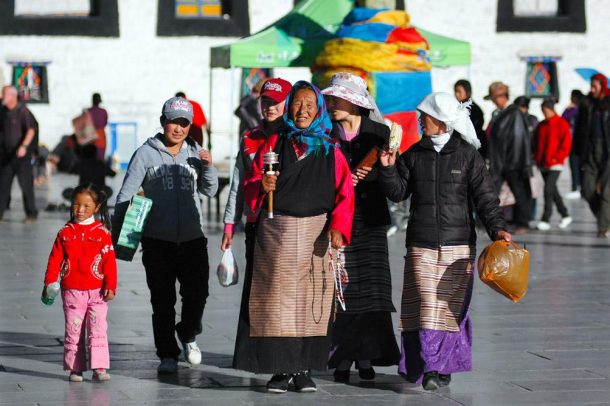
Tibetan Pilgrims in Bakhor street during the winter months
The higher altitudes are the places that experience most of the snow in winter, leaving a majority of the plateau comparatively free of snow, and with the bright winter sunshine, temperatures during the day are comfortable. The average daytime temperatures across Tibet range from 10 to 18 degrees, which is warmer than many places in northern China. With clear skies throughout the winter months, the blazing sun can make the daytimes feel almost summer-like. January and February are the times when it is most likely to snow in the lower-altitude areas of Tibet, and even then, the snow is not normally very deep. However, at this time of year, the snow on the higher mountains and passes may be very deep and unstable, so visits to certain very high regions of Tibet are off-limits when the snow is at its heaviest.
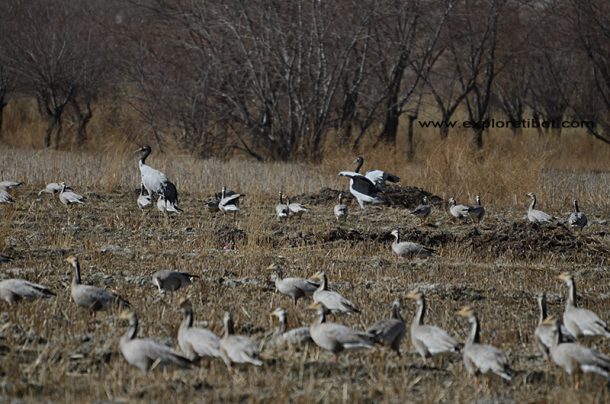
Black-necked cranes and wild ducks during the winter in Tibet
The main drop in temperature comes at night, when it drops to well below freezing. And this can be countered by warm clothes, a good sleeping bag and tent if camping, and even the luxury of a warm, cozy hotel. All of the hotels used in our Tibet Winter tours are of excellent quality, and have working heating in all the rooms, so your stay is even more comfortable, than ever. Whether you are staying in Lhasa in a nice hotel, or out in the middle of Tibet in a local tent guesthouse, you are guaranteed to be warm and comfortable wherever you go.
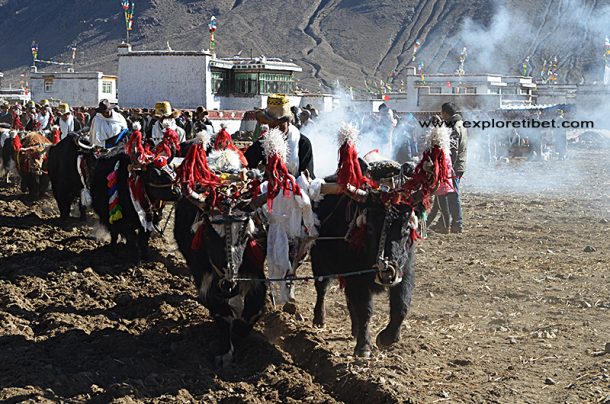
Tibetans farming with Yaks in traditional way
Tibet Winter Tours
Based on our expertise in Tibetan culture, Explore Tibet has developed some of the best winter tours, which give you the most insight into the unique Tibetan culture and religion. From the astounding sight of the Butter Lamp festival in Lhasa, where butter lanterns are lit all around Jokhang Temple, to the unique beauty of the monastic debates at Sera Monastery, Explore Tibet has tours to suit every need. Explore Tibet has hand-selected the best of Tibetan culture and religion, to bring a unique set of winter tours that will delight and amaze you.
Spend five days in and around Lhasa, exploring the unique sites of Jokhang Temple, Potala Palace, and Sera and Drepung monasteries. Or join a longer tour that takes you across the region from Lhasa to Shigatse, the second largest city in Tibet, passing the stunning Lake Yamdrok on the way, and then pays a visit to the majestic Mount Everest, standing high above the surrounding Himalayan Mountains.
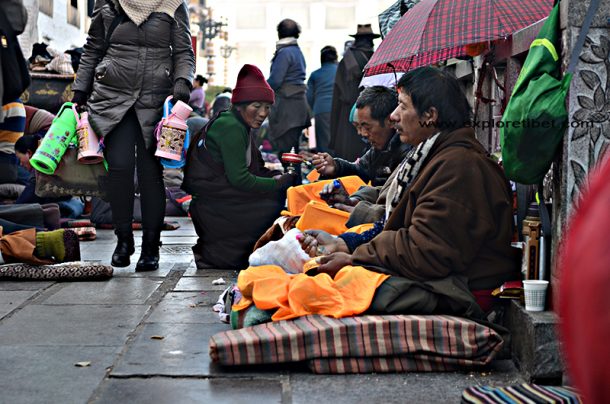
Tibetan Pilgrims Praying at Jokhang temple in Winter
Main reasons why a winter Tibet tour is a unique experience
Crowds
Winter in Tibet is a time when tourism is at its lowest, and visitors to the region are few. For those who do not mind a little chill, winter is the perfect time to visit the region, since there are fewer tourists to get in the way, allowing you to spend more time looking at the amazing sights of Tibet, without having to jostle through crowds of people to see them.
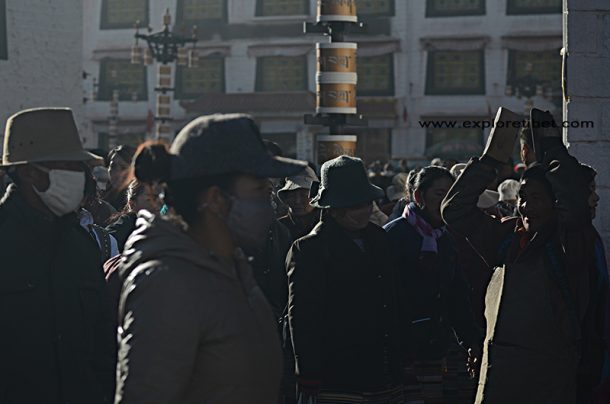
Bakhor street is crowded with locals during the winter
Pilgrims
Winter is a time for pilgrims in Tibet. With the harvest over, and the yaks in their winter pasture, safe from prowling predators, Tibetans have more time to spend with their families and in their religion. There is little to do in winter for many Tibetans who run farms and herds, so it is a great time for them to catch up on the year’s religious practices, the most popular of which is the pilgrimage. Tibetan pilgrims travel for hundreds of miles to visit holy sites such as Jokhang temple in Lhasa, or holy Mount Kailash near in the Gangdise Mountains in the west of Tibet. Moreover, seeing these pilgrims on their marches across the region, and their koras around holy sites, is something very unique and humbling.
Cost
As with most tourist destination in the low season, prices for hotels and accommodation, flights and rail tickets, and even some foods, get a lot cheaper when there are fewer people visiting. This is known as “tourism inflation”, and occurs all over the world, where prices are inflated to meet high tourist demands. Winter in Tibet means your visit costs you a lot less than in summer. Moreover, Explore Tibet has some great discounts on its winter tours, giving you great savings when compared to a summer tour price.
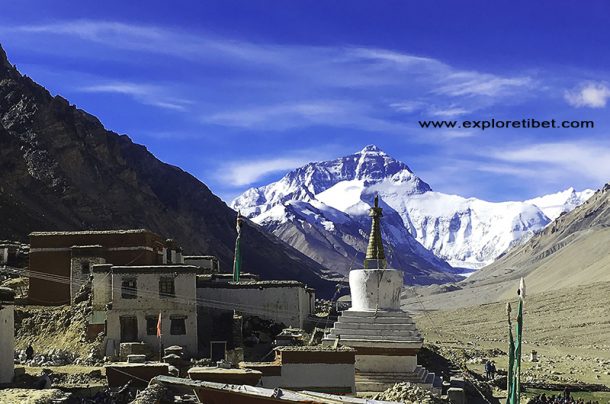
Great View of Mt Everest in the winter
Views
Winter in Tibet means cold, dry climate conditions, with long periods of very clear skies. Compared to summer, the oxygen content of the air is spread thinner, making the air less dense. This makes for much better pictures, as clarity through the thinner air is improved. So if you want to get that perfect shot of Mount Everest, or see the universe around you more clearly on a clear, starry night, then winter is the perfect time to do so.
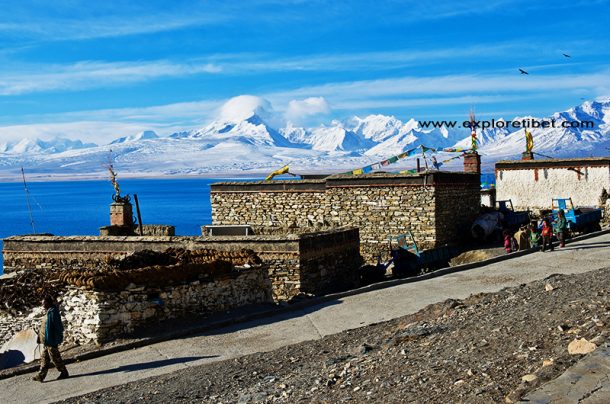
View of the Yamdrok lake during the winter
Explore Tibet is a Lhasa based local Tibetan tour company and has more than decade of experiences in operating Tibet tours, with profound local expertise and knowledge, Explore Tibet has won many titles as best Tibet tour operator and recommendations from world top travel brand like Lonely planet guide book, TripAdvisor, Bradit guidebook and so on.
Recent Posts
Exploring the Beauty of Tibetan Handicraft
The Ultimate Guide to Tibet Tours, Travel, and Trekking Adventures
How to Explore Tibetan Culture
All Categories
- About Tibet
- book a Tibet tour
- Buddhism Practice
- Budget Tour
- China-Tibet Train
- Customized Tibet tour
- Historical Sites
- Hot Springs in Tibet
- News
- Photography in Tibet
- Tibet attraction
- Tibet Group Visa
- Tibet Motorcycle Tour
- Tibet Small Group Tours
- Tibet Tours and Tibetan Tour Guide
- Tibet Train
- Tibet Travel FAQs
- Tibet Travel Information
- Tibet Travel News
- Tibet Travel Permit Update
- Tibet Travel Prices Rises
- Tibet Trek
- Tibet Trekking Tour
- Tibet weather and climate
- Tibet Wildlife animals
- Tibet Winter Tour
- Tibetan Buddhism
- Tibetan Cultural Features
- Tibetan Culture and Poeple
- Tibetan Festivals
- What to see in Tibet



